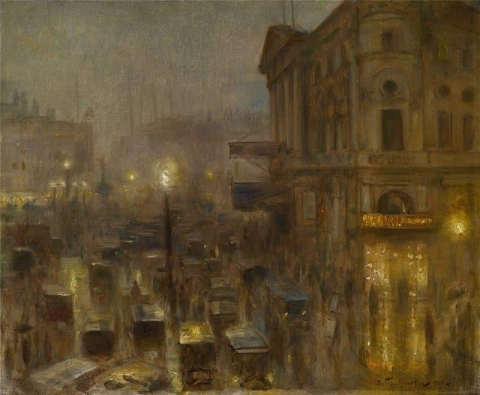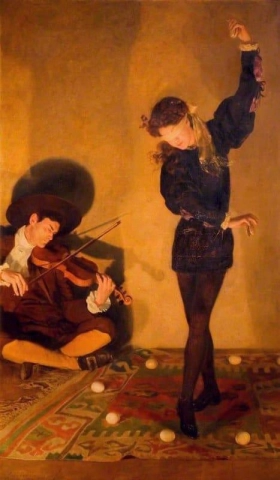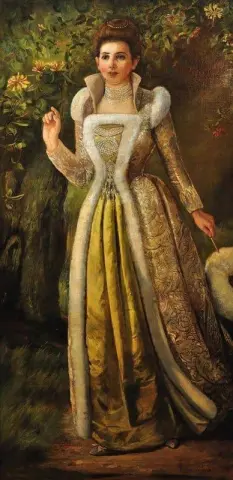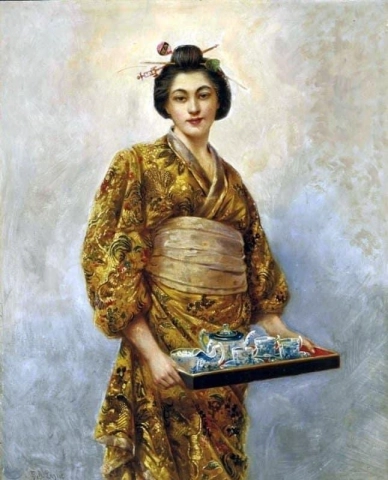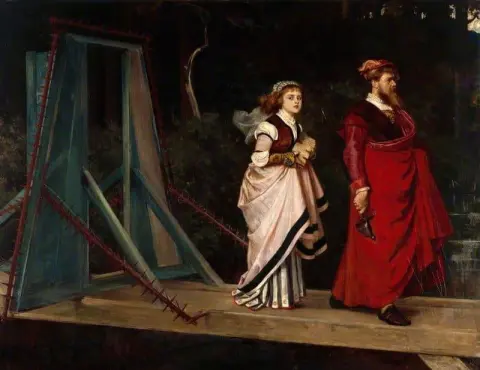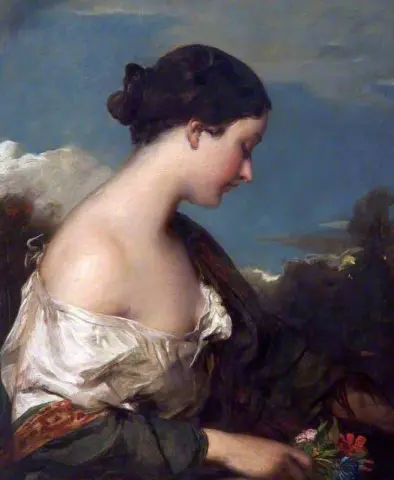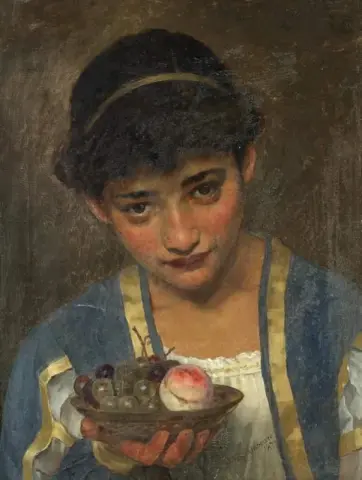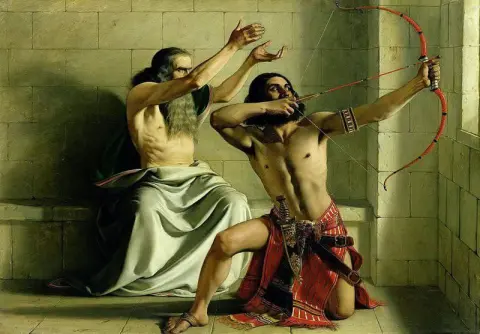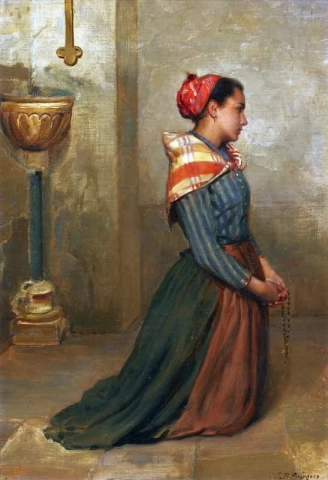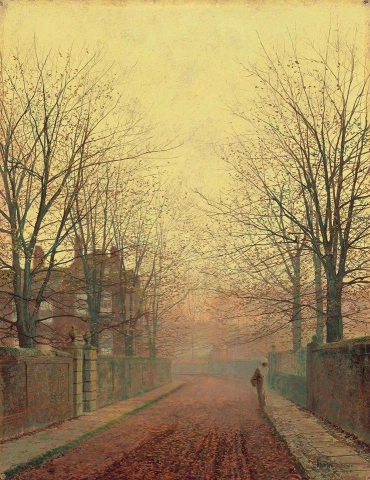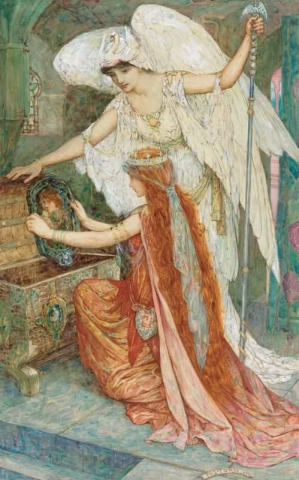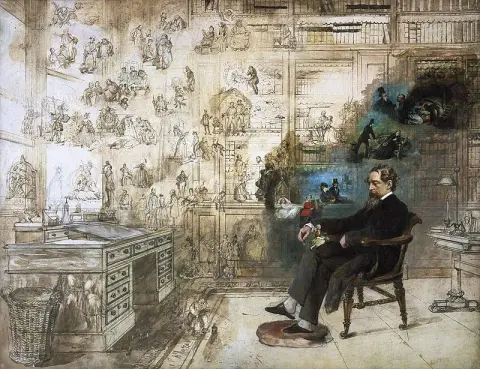Hand-painted painting reproductions - Movements - Victorian
Imagine owning a museum-worthy piece of art, created by the greatest artists in history and reproduced by passionate and experienced painters. At POD, we offer you the opportunity to make that dream a reality. We reproduce the works of art of your favorite painters from the Victorian art movement in the smallest details, so that you can enjoy them in your own home.
Our reproductions are made by experienced artists who use the best materials and techniques. We are committed to providing you with works of art of the highest quality, which will bring joy and inspiration to your family for generations to come.
Victorian Art: The Flourishing of 19th-Century British Aesthetics
Victorian art, which spanned the reign of Queen Victoria (1837–1901), represents one of the most dynamic periods in British cultural history. Characterized by both rich technical innovation and deep moral undercurrents, Victorian art is often seen as a bridge between the romanticized past and the industrialized future. This era of artistic production was profoundly influenced by the social changes, technological advancements, and growing imperial reach of the British Empire.
Early Development and Influences
The roots of Victorian art lie in the early 19th century, a period marked by industrial revolution and the expansion of the British Empire. As Britain underwent rapid modernization, art adapted to reflect the social and technological transformations. In the early years, artists drew inspiration from Romanticism, a movement that emphasized emotion, nature, and individualism. This was particularly evident in the works of artists like J.M.W. Turner and John Constable, who continued to influence subsequent generations.
As the century progressed, Victorian art began to embrace a variety of styles, from highly detailed realism to symbolic allegories, all reflecting the era’s cultural complexity. The pursuit of moral instruction, social commentary, and the glorification of the past were key themes during this time.
Characteristics and Style
Victorian art is known for its attention to detail and vibrant realism, achieved through techniques like finely layered oil painting and careful representation of light and shadow. This highly polished aesthetic was often paired with moral or narrative content, as artists sought to convey moral lessons or reflect the virtues and struggles of their society.
A hallmark of Victorian painting was its attention to texture and surface detail. Artists often spent significant time capturing the intricate features of their subjects, from the fabric of clothing to the expressions on their subjects' faces. Portraiture flourished during this period, with artists like Sir Thomas Lawrence, George Frederic Watts, and Julia Margaret Cameron creating iconic works of both the elite and ordinary people.
Victorian art was also marked by a love for symbolism and allegory. Many artists depicted historical or mythological subjects, using these themes to comment on contemporary issues such as morality, social class, and industrialization. Symbolism and idealism played a major role in the art of the Pre-Raphaelite Brotherhood, founded in 1848, which rejected the industrialized world and sought to return to the detailed and vibrant naturalism of the early Renaissance.
Key Themes and Significance
One of the defining features of Victorian art is its deep engagement with social and cultural issues. Many artists used their works to reflect on the changing roles of women, the rise of industrialism, and the challenges facing the British Empire.
Moral and Social Commentary: Victorian art frequently carried a strong moral or didactic tone. Artists used their works to comment on issues such as poverty, class disparities, and the moral responsibilities of the upper classes. Paintings often illustrated narratives drawn from literature, religion, or the daily lives of the working class.
Historical and Allegorical Themes: Alongside realism, Victorian artists often turned to historical or allegorical themes. This was not only a reflection of Britain’s growing imperial pride but also a way to idealize the past. Many works were based on the stories of kings, queens, and mythical heroes, portrayed in a way that emphasized virtue, nobility, and courage.
Women and Domesticity: Women were central subjects in Victorian art, whether portrayed as virtuous wives and mothers or as goddesses of beauty and morality. The portrayal of women in the domestic sphere—engaged in activities such as reading, caring for children, or taking part in religious rituals—was prevalent. The moral uprightness associated with the domestic sphere became a symbol of Victorian virtue, and artists like Frederick Leighton, Dante Gabriel Rossetti, and Edward Burne-Jones created many iconic depictions of female figures in these settings.
Industrialization and the Modern World: As the industrial revolution reshaped society, some artists responded to these changes with caution, even nostalgia. They painted scenes of nature and the past to counterbalance the emerging industrial landscape. Others, however, sought to represent the advances in science, technology, and urbanization, acknowledging the profound shifts happening in Victorian society.
Achievements and Influence
Victorian art left an indelible mark on both British and global artistic traditions. The era saw the rise of several influential art movements, including the Pre-Raphaelite Brotherhood, the Arts and Crafts movement, and later, the Aesthetic movement. Artists like Dante Gabriel Rossetti, John Everett Millais, and William Holman Hunt, whose works were often full of symbolic meaning and moral commentary, became iconic figures of the era.
The Pre-Raphaelite Brotherhood, in particular, sought to rebel against the academic conventions of the time, pushing for more naturalistic depictions of the human form, highly detailed environments, and vivid color palettes. Their work would go on to influence not only the visual arts but also literature, theater, and design.
As industrialization progressed, the rise of photography also impacted the world of portraiture and realism. However, Victorian portrait painters still retained the upper hand in capturing the essence of their subjects through meticulously painted works.
Legacy and Modern Impact
The legacy of Victorian art is still felt today, with many museums and private collectors maintaining collections of iconic paintings. While some of the era’s more sentimental or moralistic themes have been reevaluated, Victorian art’s commitment to technical skill and its detailed depictions of the human condition continue to inspire contemporary artists.
Collectors of Victorian art today appreciate the lush detail, the emotional depth, and the moral resonance in works created during this period. Paintings from this era are prized for their beauty, historical value, and the social narratives they convey, capturing a moment in time that was at once reflective and aspirational.
Where to Find Reproductions of Victorian Art
For those interested in bringing the timeless beauty of Victorian art into their home, high-quality reproductions of the works of prominent Victorian artists can be found through Painting On Demand (POD). These detailed reproductions allow collectors and enthusiasts to experience the charm and sophistication of the Victorian era, offering a refined and elegant touch to any collection or living space.





